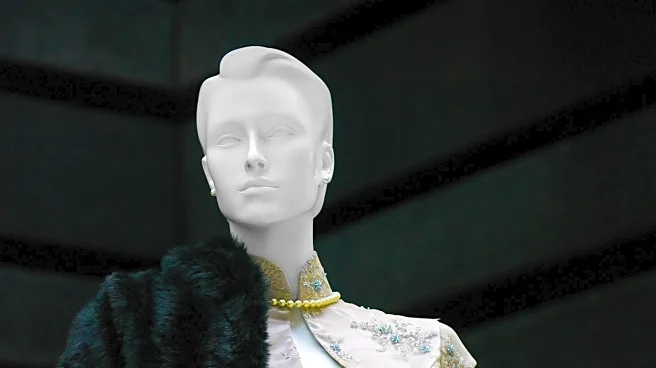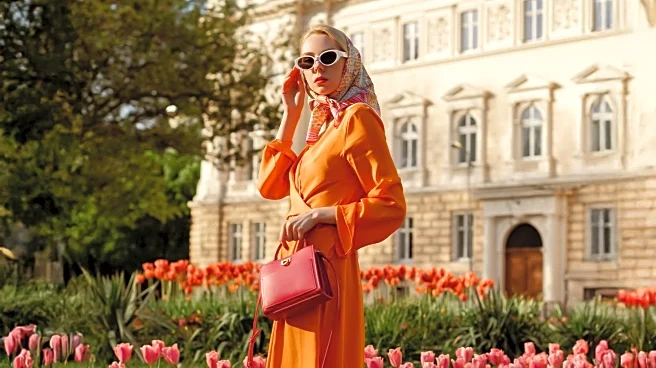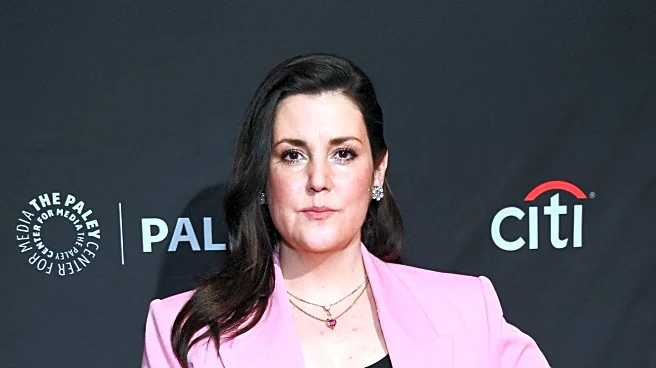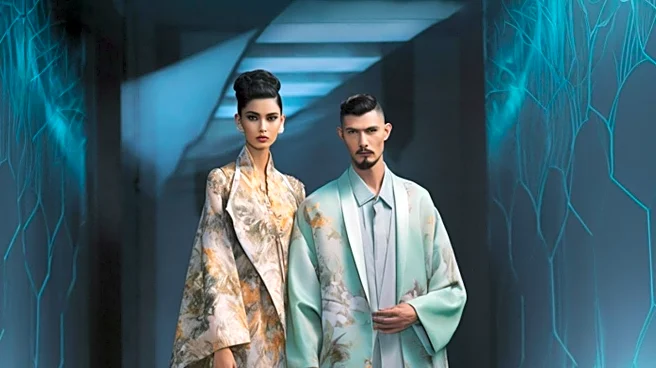What's Happening?
Fashion designers are increasingly drawing inspiration from Virginia Woolf and the Bloomsbury Group, integrating elements of their artistic and literary legacy into contemporary fashion collections. Kim
Jones, a British fashion designer, has notably incorporated themes from Woolf's novel 'Orlando' into his collections for Fendi and Dior Men. These collections explore gender fluidity and historical references, resonating with Woolf's subversion of gender norms and her exploration of time and identity. The fashion industry is capitalizing on Woolf's iconic status, with designers using her work to create garments that blend historical and modern aesthetics.
Why It's Important?
The integration of Virginia Woolf's themes into fashion highlights the enduring influence of Modernist literature on contemporary culture. This trend reflects a broader societal interest in gender fluidity and the questioning of traditional norms. By referencing Woolf's work, designers are not only paying homage to her literary contributions but also engaging with current cultural dialogues around identity and expression. This intersection of fashion and literature underscores the role of fashion as a medium for cultural transmission and the reinterpretation of historical narratives in modern contexts.
What's Next?
As fashion continues to draw from literary and historical sources, it is likely that more designers will explore the rich tapestry of Modernist themes in their collections. This could lead to further collaborations between fashion houses and cultural institutions, potentially resulting in exhibitions or events that celebrate the fusion of fashion and literature. The ongoing interest in Woolf's work may also inspire new interpretations and adaptations, both in fashion and other creative fields, fostering a deeper appreciation for her contributions to modern thought.
Beyond the Headlines
The use of Virginia Woolf's legacy in fashion raises questions about the commercialization of literary and artistic heritage. While these references can enrich fashion narratives, they also risk oversimplifying complex themes for commercial gain. This dynamic reflects broader tensions within the fashion industry, where creativity and commerce often intersect. The challenge lies in balancing homage with innovation, ensuring that the cultural significance of Woolf's work is preserved while adapting it for contemporary audiences.











